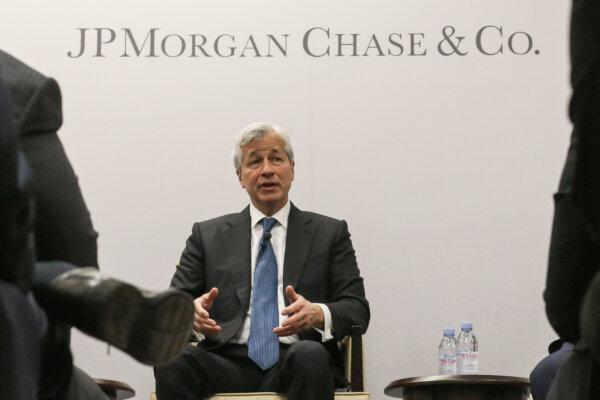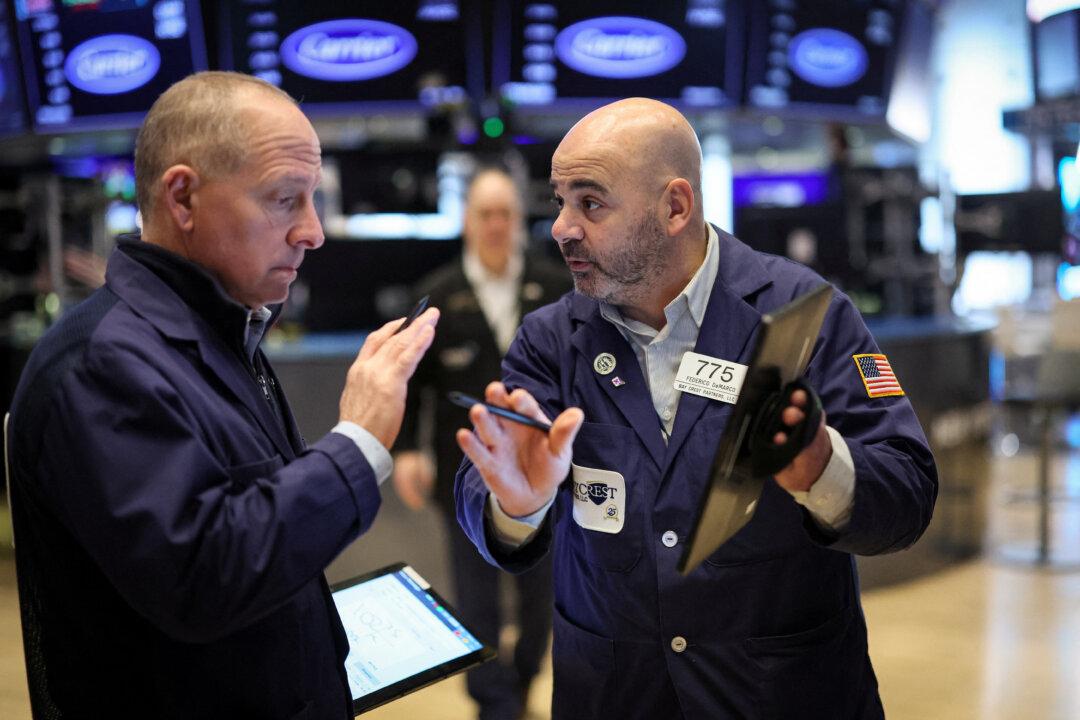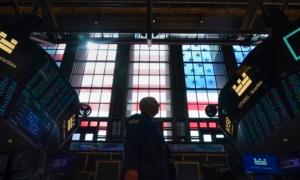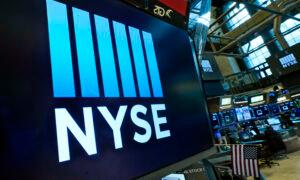U.S. stocks tanked to finish the raucous trading week as the Dow Jones Industrial Average and the S&P 500 Index suffered the largest declines of 2024, fueled by geopolitical strife, renewed inflation fears, and red ink across major bank shares.
The Dow Jones Industrial Average plunged 475.84 points, or 1.24 percent, to 37,938.24. The index posted a weekly loss of 2.37 percent, paring its year-to-date gain to 0.78 percent.
The Nasdaq Composite Index slumped 267.10 points, or 1.72 percent, to 16,175.09. The tech-heavy index posted a weekly slide of 0.45 percent, trimming its 2024 rally to 7.75 percent.
Iran-Israel Escalation Threat
Investors are worried that there will be a broader conflict in the Middle East as there is a “real” and “credible” threat of Iran launching retaliatory missile strikes against Israel.Last week, Israel killed three Iranian generals after attacking an Iranian compound in Syria. Since then, the administration has warned that Tehran has threatened a “significant attack” on Israel.
John Kirby, a spokesperson for the U.S. National Security Council, told reporters at the White House that “we’re watching this very, very closely.”
“We are certainly mindful of a very public and what we consider to be a very credible threat made by Iran in terms of potential attacks on Israel,” Mr. Kirby said. “We are in constant communication with our Israeli counterparts about making sure that they can defend themselves against those kinds of attacks, but I really don’t want to get into armchair quarterbacking this thing in a public way.”
According to Fox Business Network’s Charles Gasparino, Wall Street trading desks are monitoring the Iran-Israel conflict and expect Tehran to counterstrike Israel soon, but will refrain from targeting “major population centers.” Since it would be considered “devastating” to Iran, it would potentially widen the military conflict, leading to an inflationary fallout.
A possible escalation would come at a time of tighter global energy markets.
“The oil market has been pushed into deficit after a handful of OPEC+ members announced they would roll over their additional voluntary cuts, amounting to 2.2 million barrels a day (b/d) from the first to the second quarter of 2024. Our numbers suggest this will leave the market in a deficit of around 1 million b/d this quarter,” said ING commodities strategists in a research note.
Crude oil prices have been rallying on the situation.

West Texas Intermediate (WTI) crude prices topped $86 a barrel on the New York Mercantile Exchange, adding to their year-to-date gains of about 21 percent. Brent, the international benchmark for oil prices, hovered around $91 per barrel on London’s ICE Futures exchange.
Second Inflation Wave
Financial markets and monetary authorities are still debating whether a second wave of inflation is hitting America’s shores or whether there are bumps in the last mile.Investors have been hit with various inflation metrics that suggest price pressures are not going away.
In March, import prices rose at a higher-than-expected pace of 0.4 percent, up from 0.3 percent. The consensus estimate was 0.3 percent. They also rose 0.4 percent compared to the same time a year ago. This is also up from the February reading of negative 0.9 percent, downwardly revised from negative 0.8 percent.
For the fourth straight month, the Consumer Price Index (CPI) was hotter than expected. The annual inflation rate climbed to 3.5 percent last month, higher than the market forecast of 3.4 percent.
The Producer Price Index (PPI), a gauge of what businesses pay for goods and services, edged up 0.2 percent, less than economists’ expectations of 0.3 percent. Core producer prices, which strip the volatile energy and food components, also jumped 0.2 percent, in line with market expectations.
However, PPI and core PPI rose to 2.1 percent and 2.4 percent, respectively.
Market observers monitor this measurement because it is a precursor for what consumers pay since they are early in the supply chain.
These numbers have investors worried that the Federal Reserve will not reduce interest rates three times in 2024. The futures market is pricing in two quarter-point rate cuts beginning in September.
While the trajectory of interest rates is unclear, one economist thinks the CPI data would force the Fed to postpone a rate cut.
“If the Federal Reserve was thinking of cutting interest rates at its next meeting later this month, it probably isn’t now,” said Ryan Young, a senior economist at the Competitive Enterprise Institute. “Just as the last mile is the costliest part of shipping, the last percentage point is proving to be the hardest part of fighting inflation.”
John Williams, president of the Federal Reserve Bank of New York, explained at a Federal Home Loan Bank of New York 2024 Member Symposium on April 11 that there is no need to pull the trigger on a rate cut in “the very near term,” adding that there is still “a ways to go” to return inflation to the central bank’s 2 percent target.
During a speech to the Economic Club of New York, Boston Fed President Susan Collins noted that the latest figures “reduce the urgency to ease.”
“Data highlight the likelihood that disinflation will continue to be uneven,” she said. “We should not be surprised by some higher inflation readings after the low numbers in the second half of 2023. While expecting all indicators to be well aligned is too high a bar, further signs of progress towards the 2 percent inflation target will be necessary.”
As for consumers’ attitudes, their growing optimism since December 2023 appears to be dissipating.
The April University of Michigan Consumer Sentiment Index fell to a lower-than-expected reading that “reflects some frustration that the inflation slowdown may have stalled.”
“Overall, consumers are reserving judgment about the economy in light of the upcoming election, which, in the view of many consumers, could have a substantial impact on the trajectory of the economy,” said Joanne Hsu, the Survey of Consumers director, in the report.
Banks Swim in Red Ink
JPMorgan Chase shares tumbled more than 5 percent on Friday, sliding below $185. The bank stock is still up 7 percent year to date.
The drop came following the company’s first-quarter earnings report. While the financial titan recorded profits and revenues that beat Wall Street estimates, JPMorgan Chase’s guidance for 2024 disappointed investors.
The bank expects a net interest income of about $90 billion, unchanged from the previous estimate. Traders had anticipated JPMorgan Chase to boost its guidance by as much as $3 billion for the year.
Jamie Dimon, the bank’s CEO, expressed caution for the future.
“Many economic indicators continue to be favorable. However, looking ahead, we remain alert to a number of significant uncertain forces,” Mr. Dimon said, alluding to inflationary pressures and overseas conflicts.
He added that the U.S. economy has yet to feel the full effects of the Fed’s quantitative tightening.
“We do not know how these factors will play out, but we must prepare the firm for a wide range of potential environments,” Mr. Dimon noted.
Other major banks tumbled to end the trading week.
Bank of America declined nearly 2 percent, Citigroup shed about 2 percent, Goldman Sachs slipped more than 2 percent, and Wells Fargo dipped roughly 0.5 percent.







